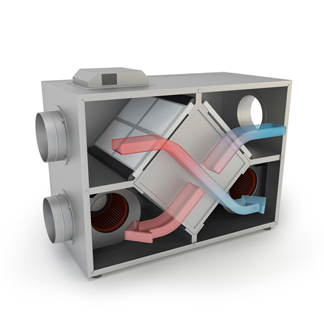
The Difference Between ERV’S & HRV’S and the Benefits of Each
Home ventilation is, at its core, a relatively simple concept. In essence, it’s out with the old and in with the new. But rather than old clothes or diet plans, it’s about the air we breathe. While the air exchange process is relatively straightforward, selecting the right system option for your home can prove to be a bit more complex.
The addition of a complete ventilation system to your home helps provide you and your family with a healthy overall living space. What a reliable ventilation system does is reduce the presence of harmful particles, fine debris, allergens, and other indoor pollutants that linger throughout your home. Along with numerous health benefits, a fully functional ventilation system can also lower monthly utility bills and improve your home’s energy efficiency. As the saying goes, “money talks.”
Now comes the selection process.
The two ventilation systems we’ll cover are Heat recovery ventilators (HRVs) and Energy recovery ventilators (ERVs). But while they’re similar in purpose and operation—and acronym—the two have one distinguishable difference to be considered when choosing which system is right for you. And it lies in the moisture.
Here’s a breakdown of each.
Heat recovery ventilators (HRVs)
An HRV employs the heat drawn in the stale exhaust air to pre-heat incoming air. (Because summer months experience higher temperatures, the heat from the incoming air is negated due to the cooler exhaust air.) During heat recovery, the two streams of air maintain their separation and do not mix. Each passes through its separate channels within the HRV and, the heat exchange is the result of conduction. Energy recovery rates vary between 55% and 75%.
Energy recovery ventilators (ERVs)
As mentioned above, ERVs and HRVs are incredibly similar. What separates the two is that ERVs have a heightened level of complexity. ERVs take the process a step further in they also transfer humidity between the exhaust and incoming air. What this does is helps balance indoor humidity year-round. In contrast to HRVs, the two air currents combine and provide moisture transfer. Because ERVs go the extra mile, they tend to offer higher efficiency. It should be noted that ERVs work better at increasing indoor humidity than at reducing it.
Ultimately, factors such as personal preferences, price, home layout, and local climate should be considered before making a final decision. Regardless of your choice, both ventilator systems are terrific for creating a healthy environment within your home. For superior engineering design consultation, say YES to Yagla Engineering Services.
